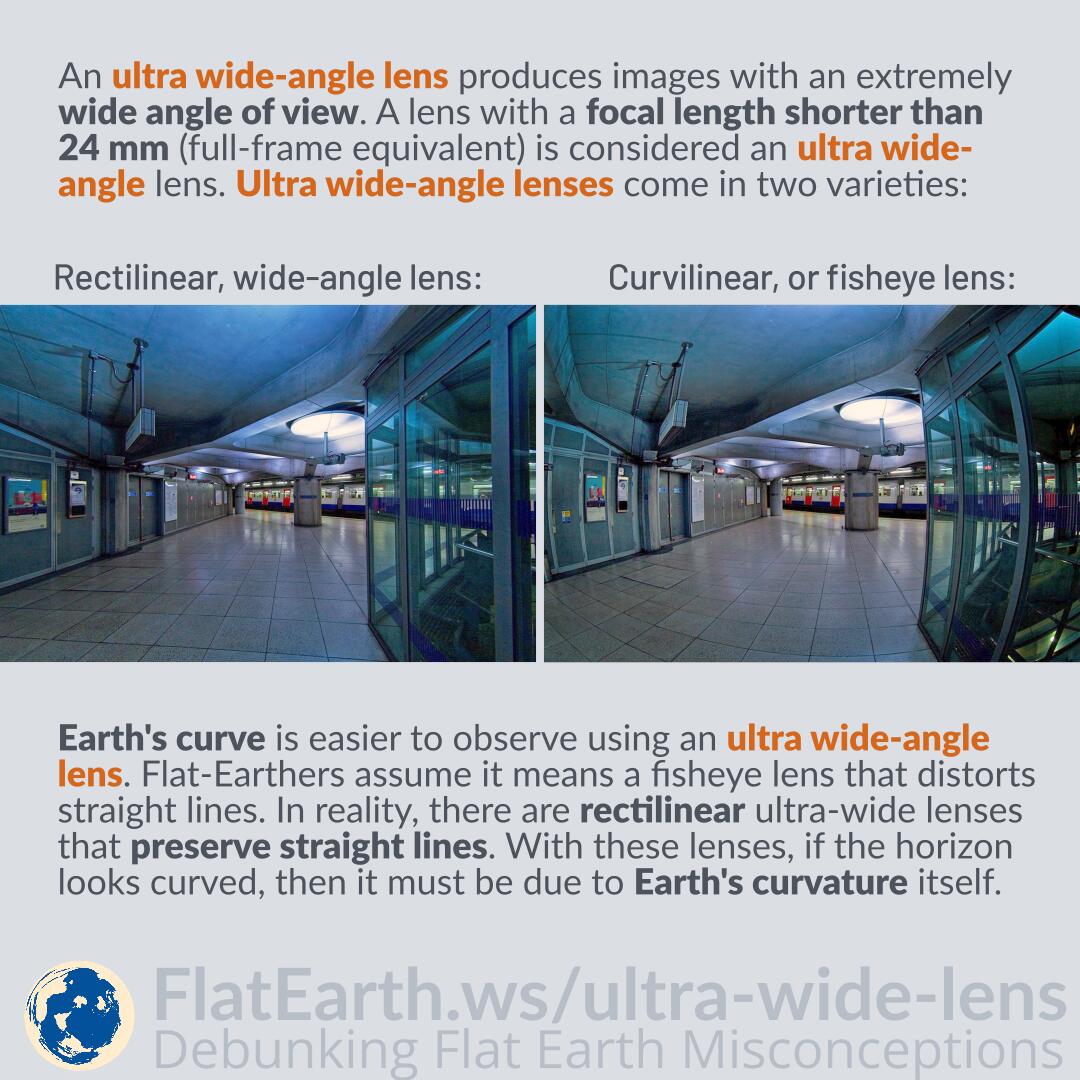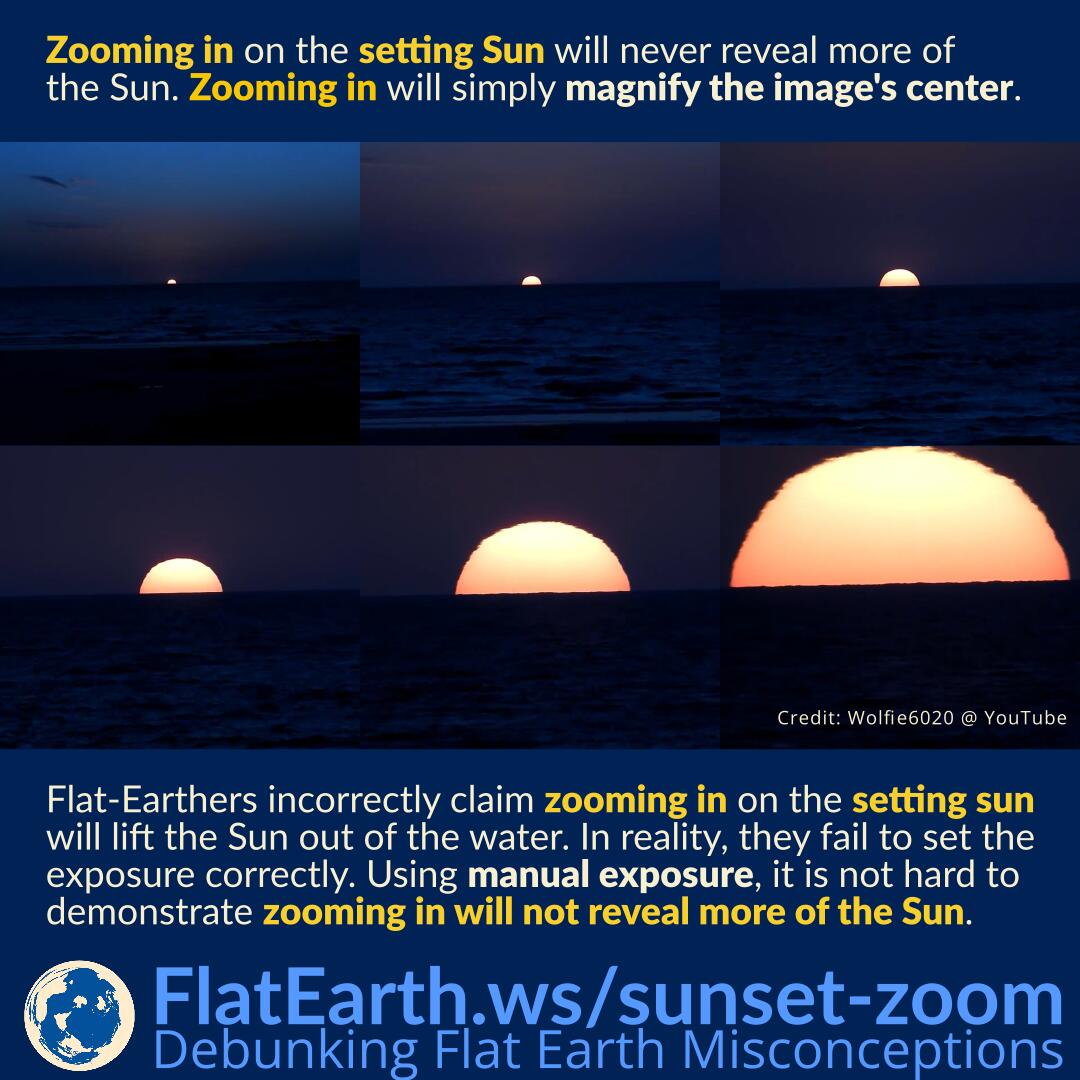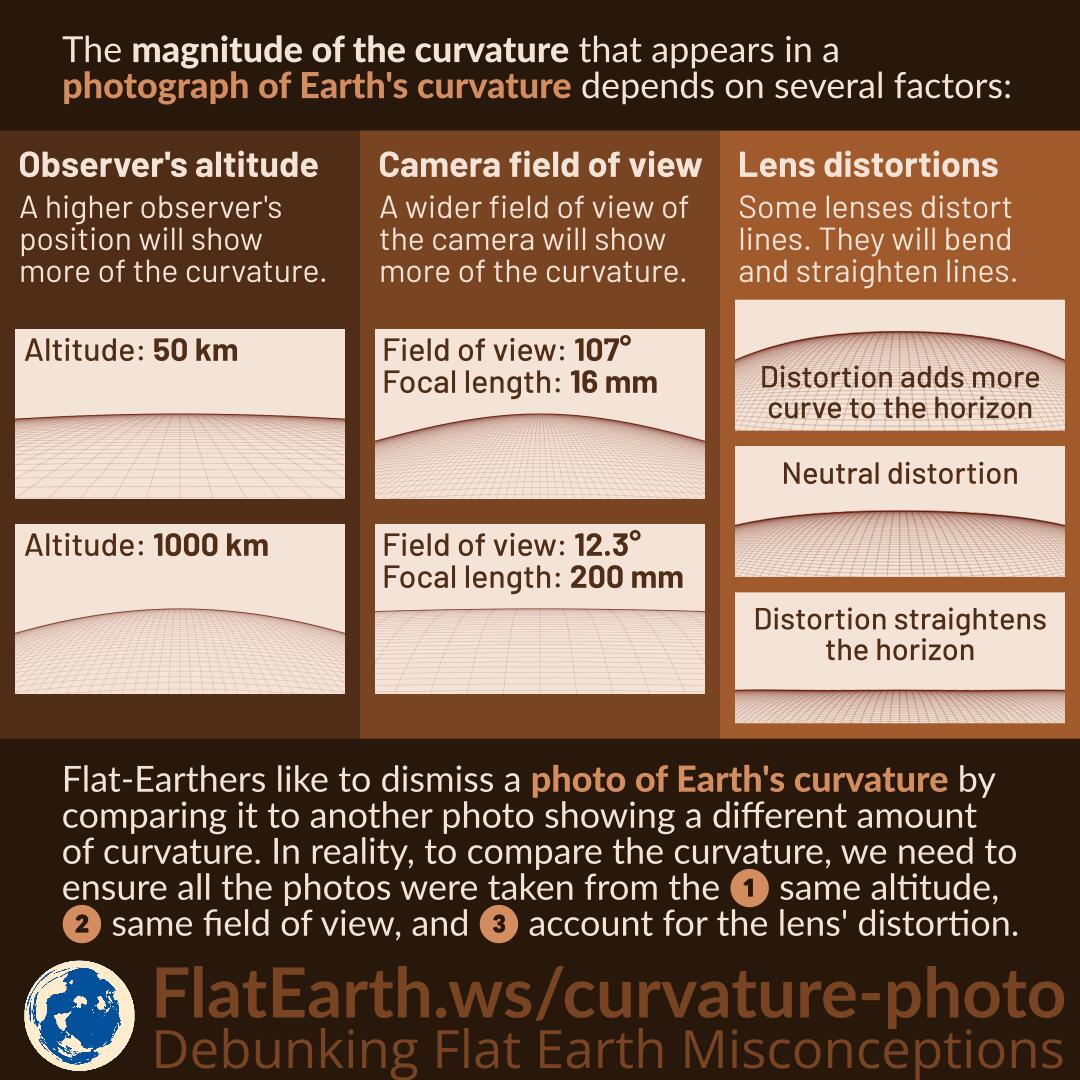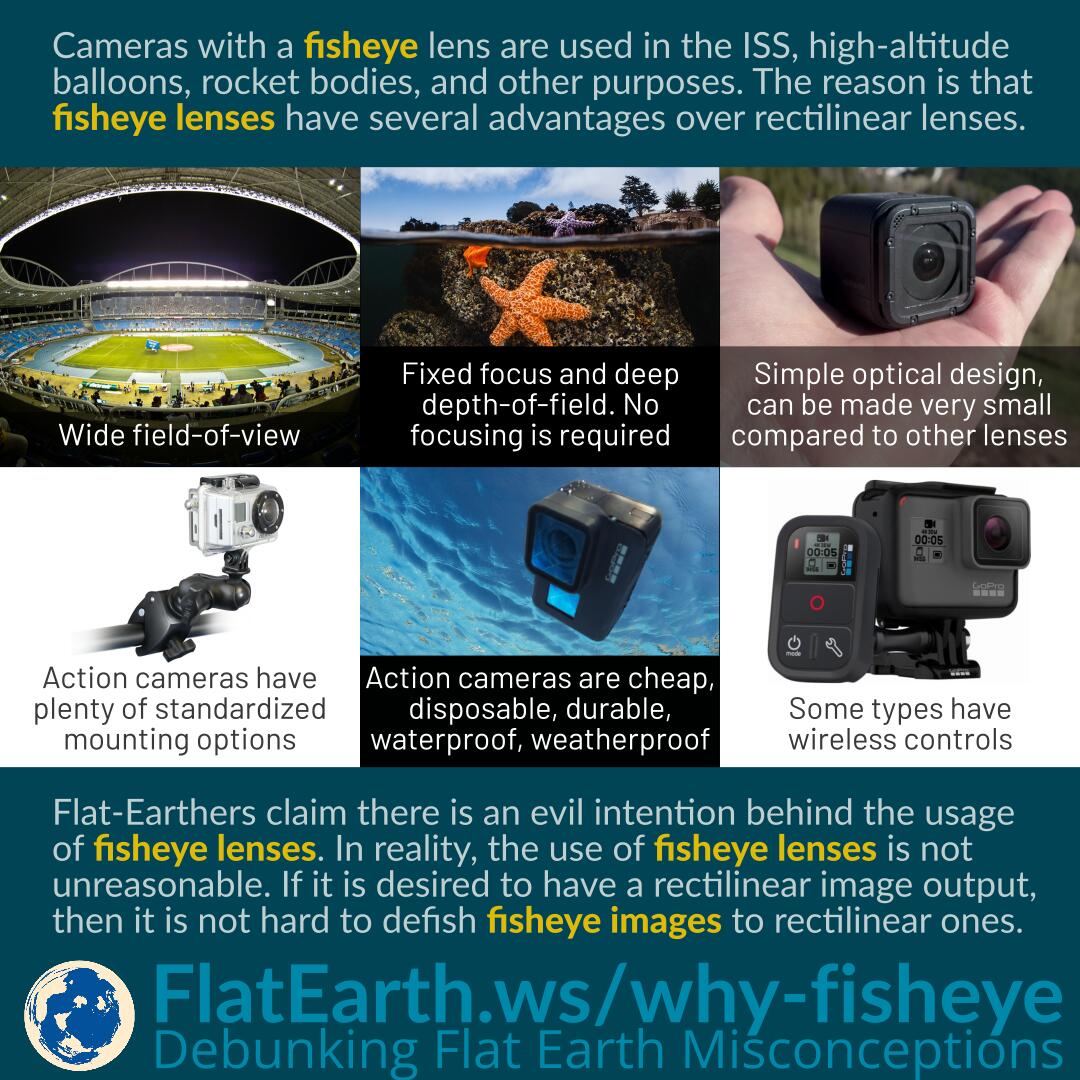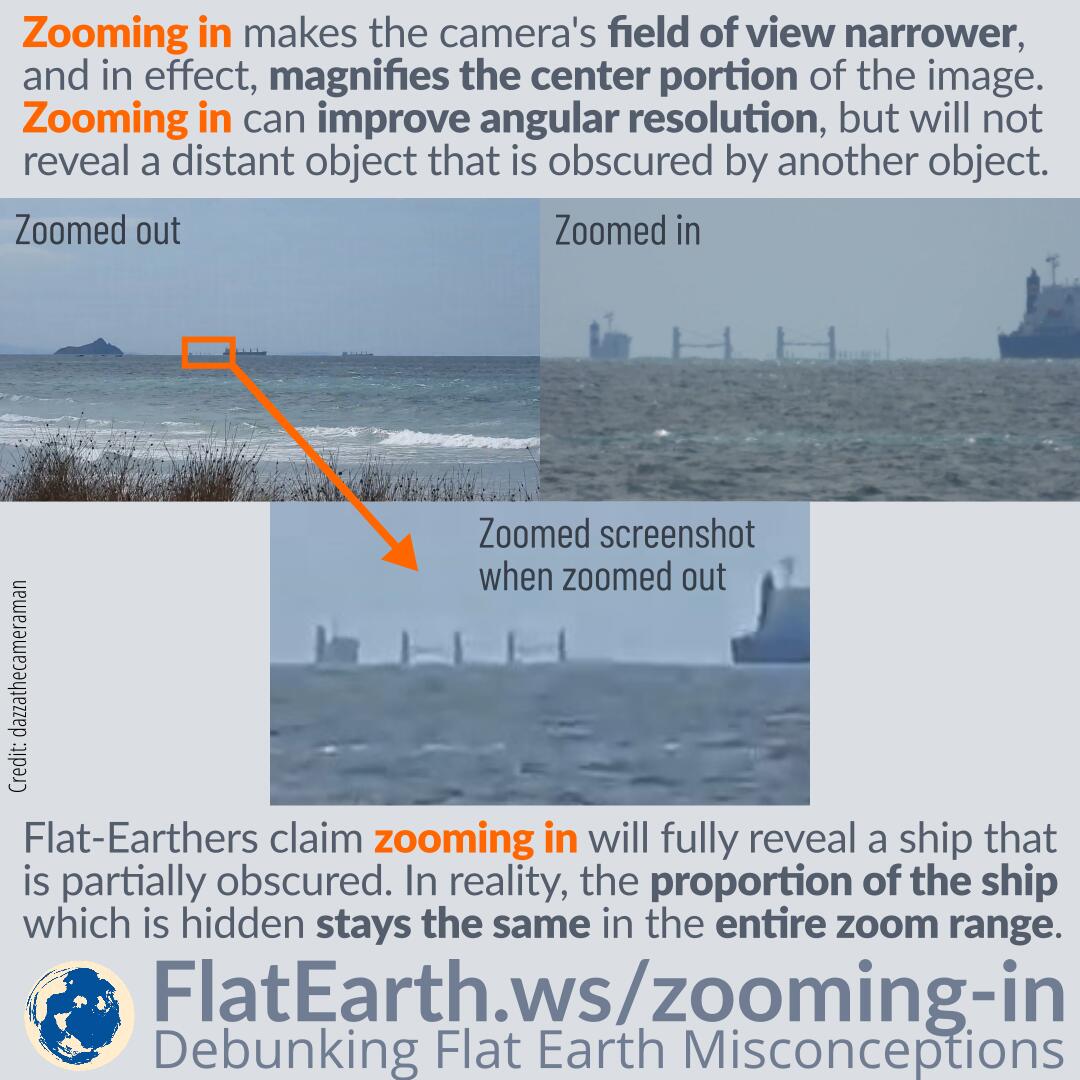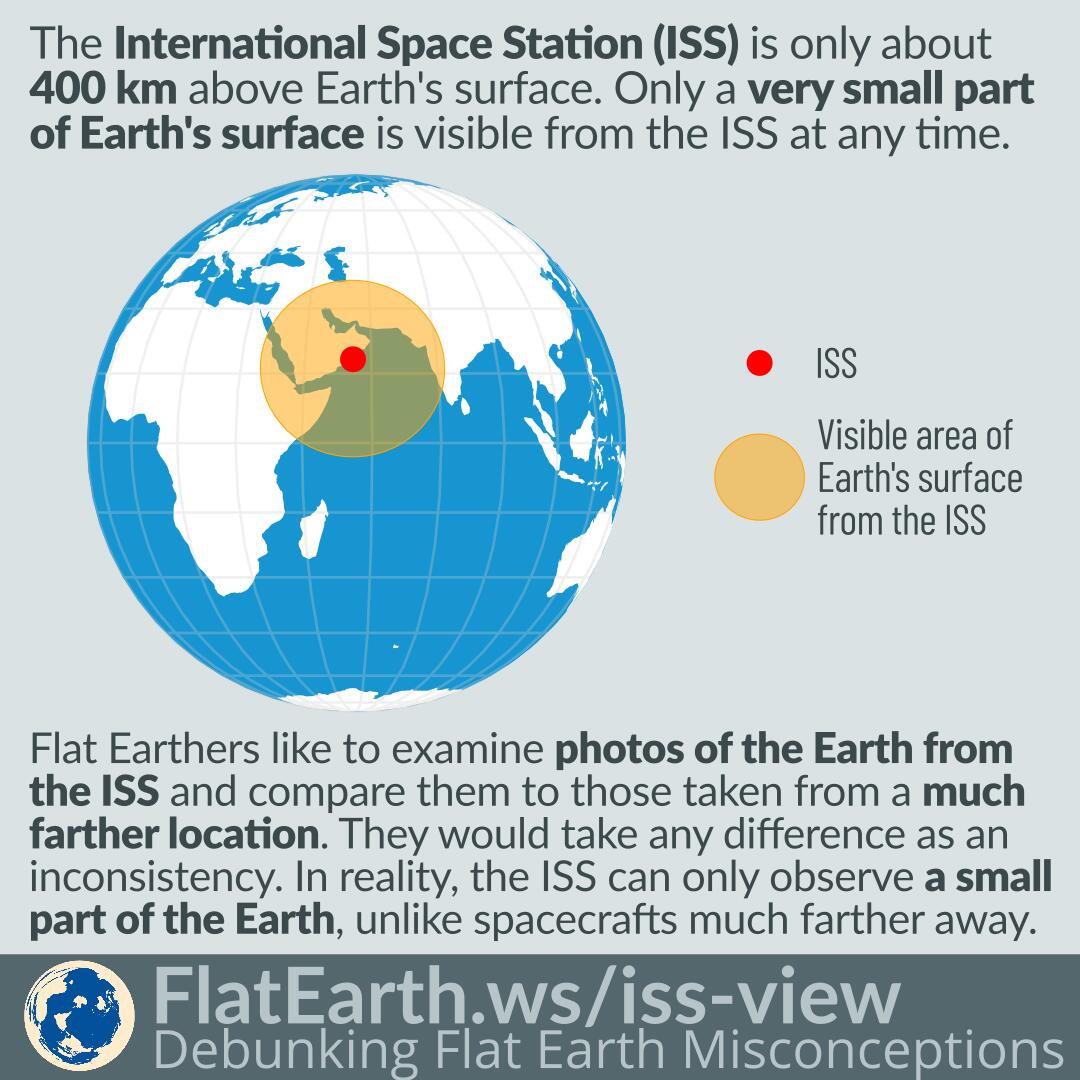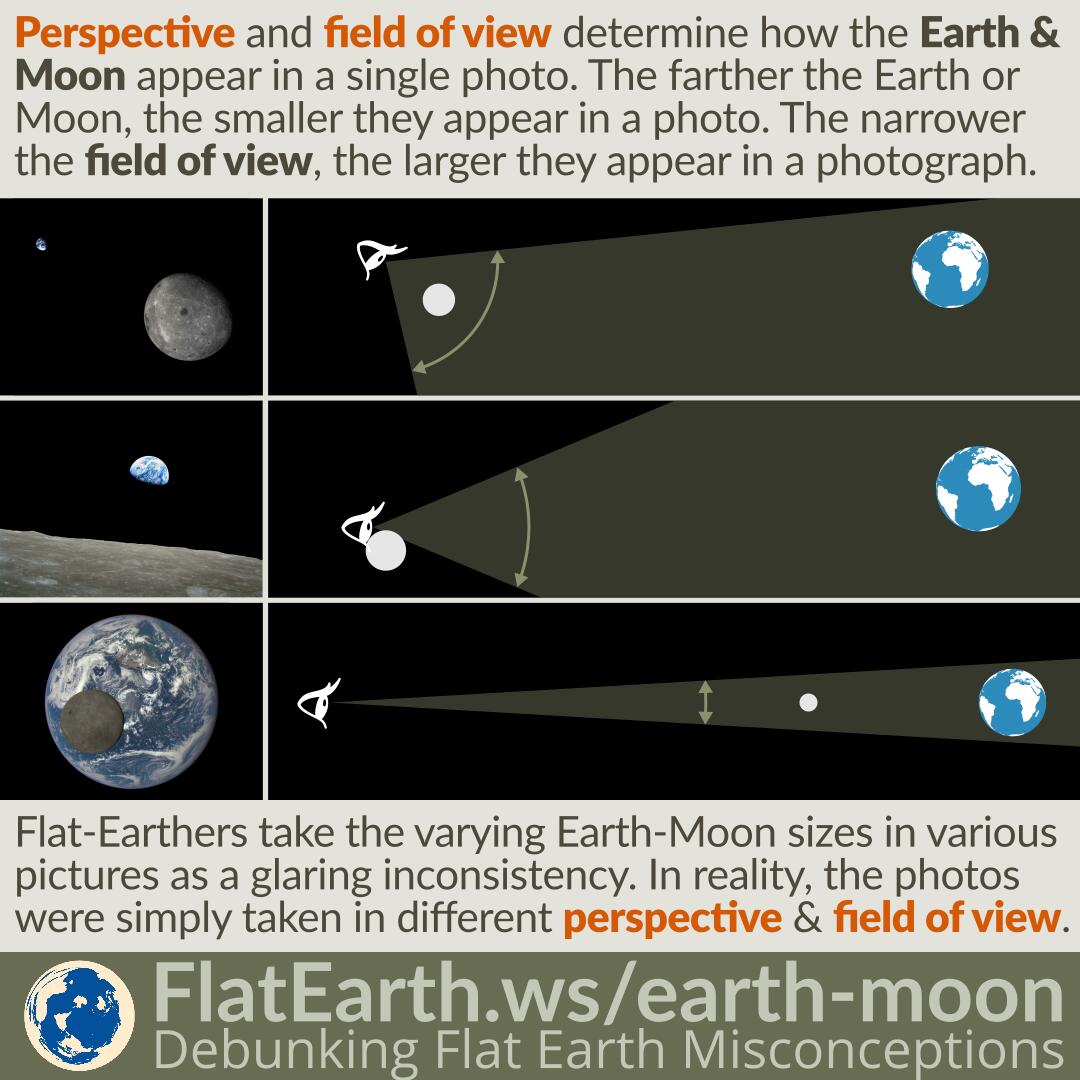An ultra wide-angle lens produces images with an extremely wide angle of view. A lens with a focal length shorter than 24 mm (full-frame equivalent) is considered an ultra wide-angle lens. Ultra wide-angle lenses come in two varieties: rectilinear lens and curvilinear, or fisheye lens.
Because of their wide field of view, Earth’s curvature is easier to observe using an ultra-wide lens. Flat-Earthers incorrectly assumed it means a fisheye lens that distorts straight lines. In reality, there are rectilinear ultra wide-angle lenses that preserve straight lines. With these lenses, if the horizon looks curved, then it must be due to Earth’s curvature itself.


